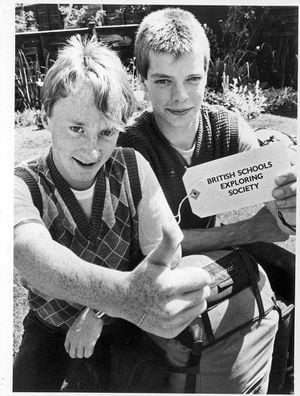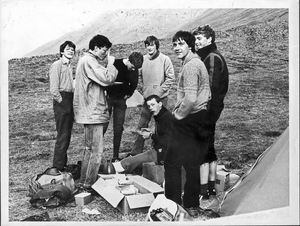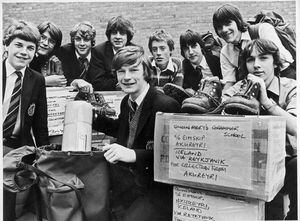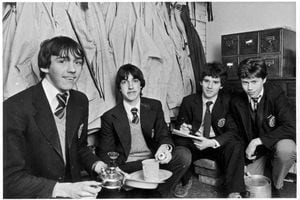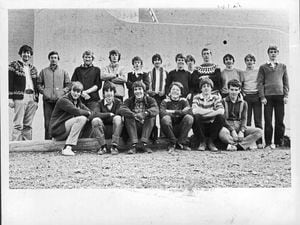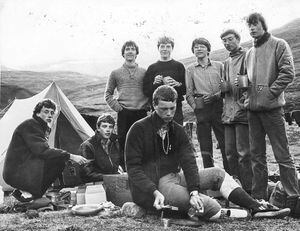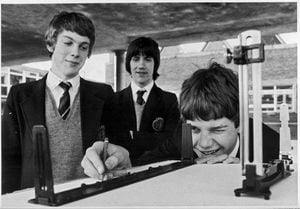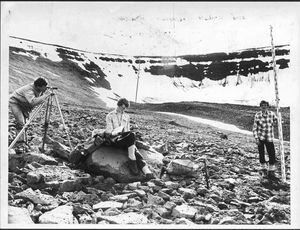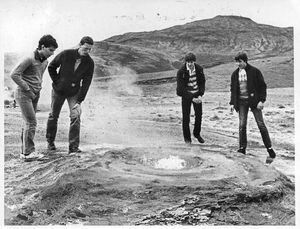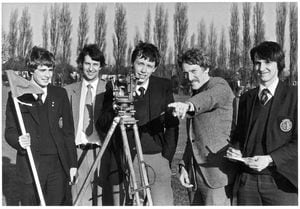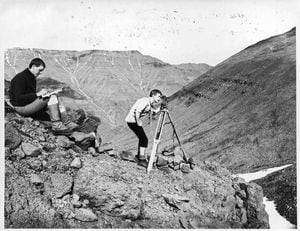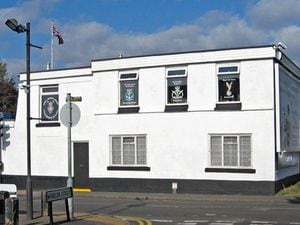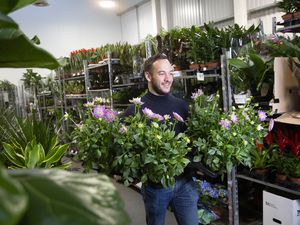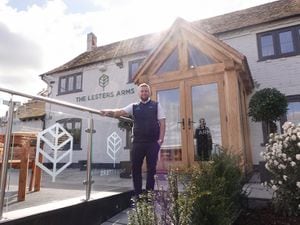Icelandic adventure for Black Country and Staffordshire schoolchildren
Geography lessons had never been so interesting for crowds of students who embarked on an adventure to Iceland.
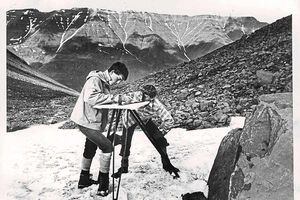
While they may not have enjoyed a whistlestop tour of sundrenched landmarks like those pupils who enjoyed a two-week tour of the Med, the youngsters from Walsall still had a trip to remember when they spent their summer holidays in Scandinavia.
Over the last two days we have featured photographs from the Express & Star archives showing pupils from the Black Country and Staffordshire enjoying a fortnight's cruise on the SS Uganda in 1982.
They were discovered in the Express & Star archive after being published in a series of articles at the time.
The expedition to an isolated valley in Iceland in 1982 was a stark contrast to the cruises around countries including Greece and Italy that the paper had previously documented.
But students were treated to views of some stunning landscapes, with volcanoes, cliffs and glaciers.
A group of 15 students and three teachers from Queen Mary's Grammar School in Walsall had to take regular training sessions to prepare for the once-in-a-lifetime trip and were given training in first aid, crevasse rescue techniques and the even the use of ice axes.
Before leaving, group leader Stuart Holtam said it was hoped that weather conditions would be mild, but admitted there was always a chance of summer blizzards.
He added the trip would be more than just a field trip with a difference.
He said: "We shall be entirely self-sufficient. It will be a real challenge for the lads."
The trip cost £6,500 and the school held fundraising activities, including a jumble sale as well as appealing to businesses and former pupils for help.
It was organised for the students to learn more about geography and geology.
The group flew to the town of Akureyri, about 60 miles south of the Arctic Circle, and then travelled by road to the hamlet of Grund, where they set up a base camp.
From there they had to continue on foot, carrying almost a ton of equipment in back packs until they reached a remote valley.
The boys, aged 16 and 17, then carried out a survey of a rock glacier using theodolites and mapping instruments.
They were investigating the glacier in the valley of Skjoldalur, and discovered it had moved three feet since the previous survey in 1977 - even though it was thought to be static.
Stephen Law, a teacher at the school, said: "The society asked us to carry out this survey and we are hoping they will find the information of value."
The results were sent to the Royal Geographical Society for inclusion in a study of Iceland's glaciatic regions.
After striking camp the group trekked back overland and then moved on to a camp site at Reykjalic, near Lake Myvatn, where they spent four days studying the effects of recent volcanic activity.
During one excursion the party actually stood on volcanic lava which had been deposited by a volcanic eruption in the previous year - and found it was still hot.
Mr Law added: "It was very brittle, like walking on cornflakes, and was still steaming to the extent that it was as if we were in fog."
The expedition proved a stiff test for the stamina and endurance of the pupils.
One of the party, 17-year-old Nigel Moore, said: "It was a great experience and taught us a lot about teamwork."
The E&S photographers and reporters followed the students as they carried out their tasks, often in front of a backdrop of snow-covered mountains and cliffs.
Many of them became proficient camp cooks by the end of the trip, learning how to survive in sometimes tough conditions.
They took boxes full of equipment and provisions to ensure all bases were covered.
Meanwhile two Rugeley teenagers were among 70 young people out of more than 500 applicants who were chosen to visit the wastes of Greenland during the same summer.
Richard Harper and Paul Trott flew from Heathrow to Iceland and then on to Greenland.
They spent seven weeks exploring and doing scientific research on the Angmagssalik island off the east coast.
The trip was organised by the British Schools Exploring Society.
One of the main tasks for Richard, of The Beeches, and Paul, of The Pringle, Slitting Mill, was making a study of glaciers to help authorities in Greenland decide on the feasibility of hydro-electric power in the region.
Paul, of Fair Oak School, Rugeley, was hoping eventually for a career in marine biology and Richard, who went to Aelfgar School, hoped for a university place in social studies.
The locations of these expeditions were somewhat unusual for a school trip at the time, which usually involved warmer climates such as France, Italy or Greece.
And while the hundreds of youngsters on the SS Uganda were treated to the holiday of a lifetime that many adults would have been jealous of, the experience for these Walsall teenagers was in many ways very different.
But the teachers in charge of all the excursions insisted they were all there to learn, no matter what the environment or location.
Akureyi remains a popular location for field trips to this day, with its range of volcanoes, mountains and glaciers providing plenty of opportunities for students to test out their geography and science skills.
The E&S embarked on a number of other trips with schools from across the West Midlands, and more photos will appear in tomorrow's paper.
If you recognise yourself in any of these images, contact reporter Adam Burling with your memories on adam.burling@expressandstar.co.uk or 01902 319501.
Or if you were on any of these trips and have photos, upload them to Star Witness and be in with a chance of winning £100!
